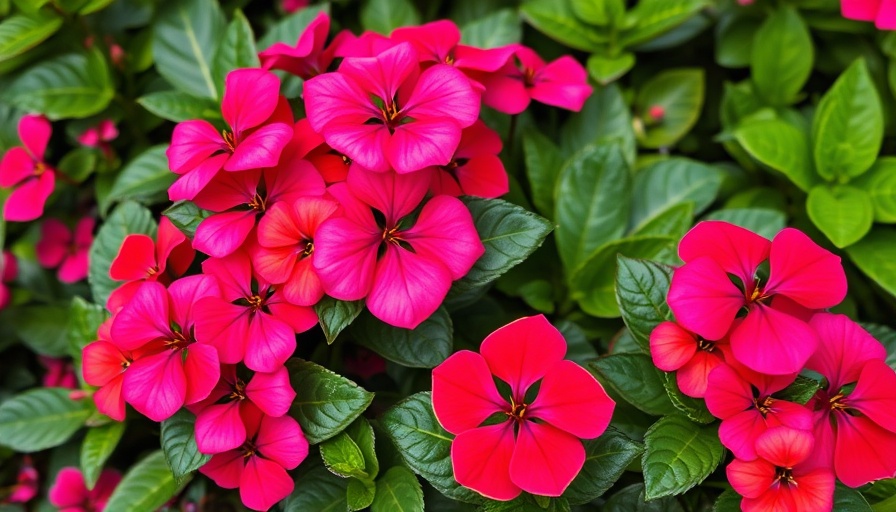
Understanding Impatiens: Beautiful Blooms in Doldrums
Impatiens are beloved among gardeners for their ability to provide vibrant, long-lasting color. Whether planted in shady garden corners or in pots on a sunlit patio, these flowering annuals draw many home gardeners’ eyes. However, despite their popularity, many still find themselves struggling with impatiens that seem to refuse to bloom. If you’re facing this issue, fear not! It’s common, and trouble can often be traced back to specific causes, many of which have straightforward solutions.
The Quest for Blooms: Why Impatiens Fail
It's disheartening to watch your impatiens grow with lush green leaves but no vibrant flowers to be seen. Here are seven common reasons your impatiens may be lacking the flowers you desire.
- Disease: Diseases like the Impatiens necrotic spot virus (INSV) and downy mildew are major culprits that can severely affect the performance of your plants. INSV is spread by thrips and can induce symptoms such as stunted growth and unusual leaf markings. Additionally, downy mildew presents as silvery-white mold on the foliage and is best kept at bay by selecting resistant cultivars when purchasing new plants.
- Heat Stress: Impatiens prefer moderate temperatures and may stop blooming during extended periods of extreme heat, especially if accompanied by dry soil. Protective measures, such as providing shade during hotter days, can prevent this stress and help your plants bounce back once temperatures cool.
- Light Issues: Surprisingly, while impatiens thrive in shady spots, too much shade or deep darkness can cripple their blooming potential. Opting for a location with dappled light or morning sun can make a noticeable difference.
- Low Temperatures: Just as heat can impact flowering, low temperatures can hinder growth and blooming. Keeping your plants in a warm location can help encourage flowering.
- Moisture Issues: Proper watering is crucial. Both overwatering and underwatering can cause stress on the plant, leading to fewer blooms. Regular soil checks and adjustments based on environmental conditions are key.
- Overfertilizing: While adequate nutrients are essential, too much fertilizer can lead to lush foliage at the expense of flowers. A balanced fertilization approach can maintain plant health without sacrificing blooming.
- Pests: Pests can cause significant damage to your impatiens, impacting their blooming ability. Regular inspections for aphids, thrips, or spider mites, and implementing pest-resistant plants can make all the difference.
Lessons from My Garden
Sometimes the causes of a gardening issue are straightforward, and other times, a little detective work is required. In my own garden, I’ve had occasions where a quick adjustment—like moving a too-shaded pot into some light—made all the difference. Other times, however, I had to reevaluate my fertilization techniques or take a closer look for pests hiding under leaves. Each time, I learned something valuable that added to my gardening toolkit.
Connecting with the Gardening Community
Remember, gardening success isn’t just about plant biology; it’s about sharing experiences and learning from one another. Many gardeners have faced the same challenges, and local garden clubs or online forums can provide support, advice, and encouragement. You’re not alone in your quest for beautiful blooms!
Embracing the Journey of Gardening
Whether you’re growing impatiens, vegetables, or planning your next DIY gardening project, the journey is laden with lessons. Embrace the experiences—both successes and setbacks—as opportunities for growth and community connection. Even the challenges can lead to more beautiful outcomes and deeper gardening wisdom.
Final Thoughts: Get Blooming with Action!
Take the time this season to inspect your garden, identify potential issues, and embrace solutions. The key to cultivating healthy, blooming impatiens lies in observation, care, and community learning. Embrace the spirit of growth, and your garden will reward you with the beauty you seek. Let’s keep growing together!
 Add Row
Add Row  Add
Add 




 Add Row
Add Row  Add
Add 

Write A Comment